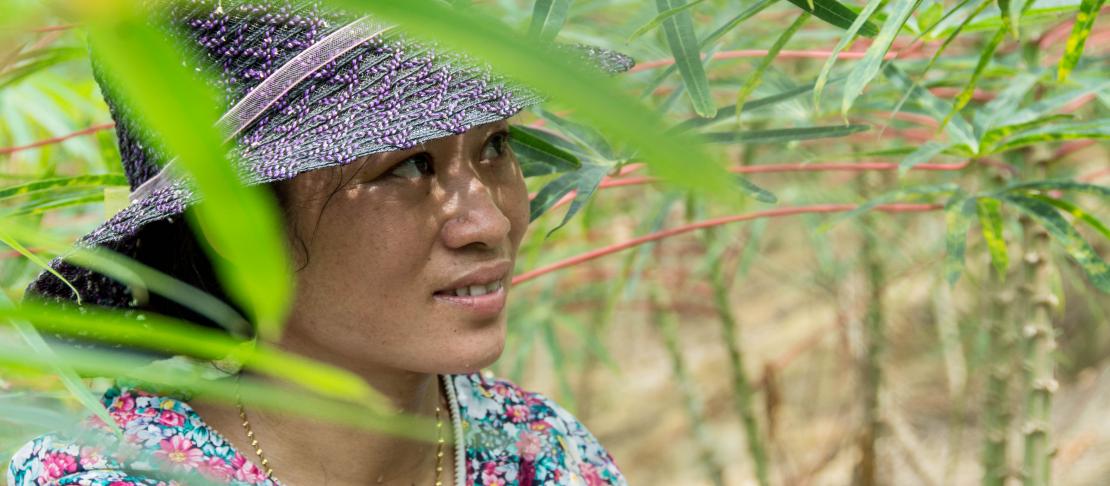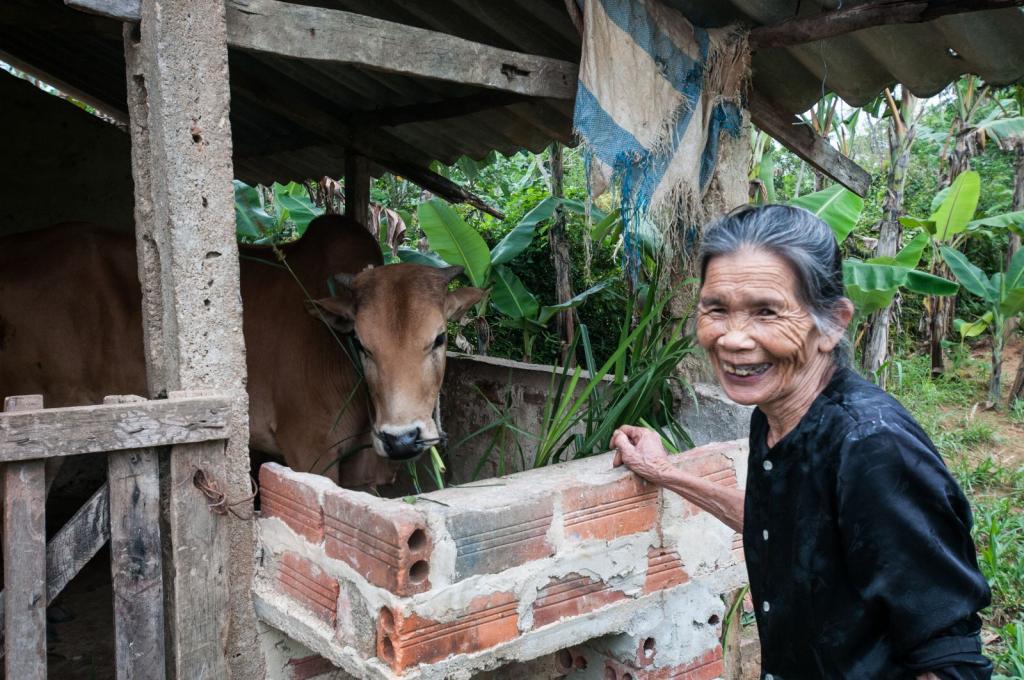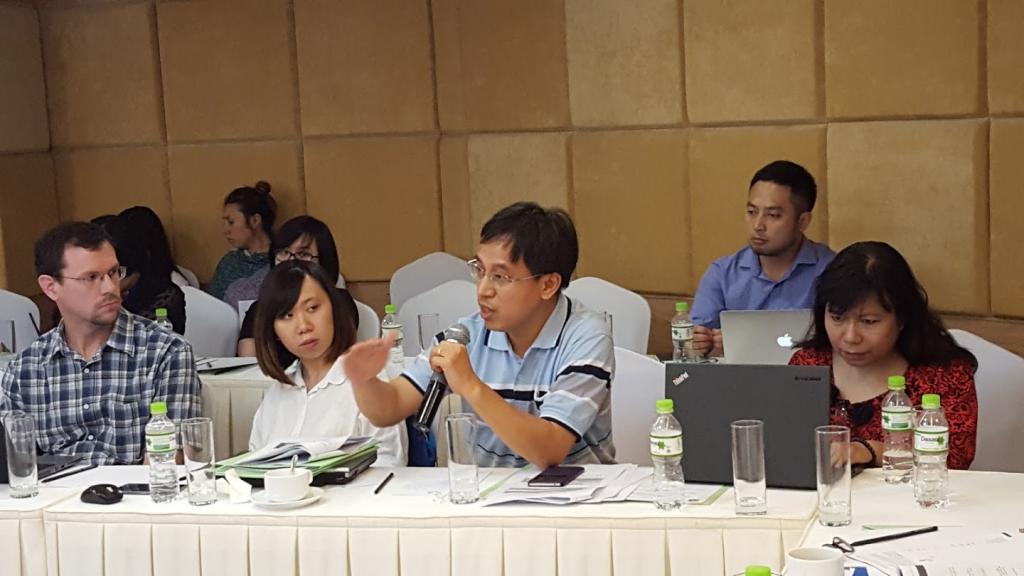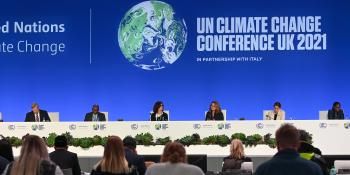Viet Nam's agriculture sector hastens emissions mitigation, joins global climate deal

The agriculture sector of Viet Nam is hastening the development of an action plan for reducing emissions towards a global low-carbon, climate-resilient future.
The agriculture sector of Viet Nam is hastening the development of the action plan for Intended Nationally Determined Contributions (INDCs) to join hands with global efforts toward a low-carbon, climate-resilient future.
With continued support from the CGIAR Research Program on Climate Change, Agriculture and Food Security (CCAFS) and the Climate Clean Air Coalition (CCAC) and in collaboration with the International Rice Research Institute (IRRI), the Ministry of Agriculture and Rural Development (MARD) organized a consultative meeting on 23 June 2016 among scientists, management agencies and interested parties to ascertain the sector’s action plan towards the INDCs.
This was the second consultative meeting on the INDCs of the agriculture sector in Viet Nam. The first consultative meeting was held on 25 August 2015 before the submission to the United Nations Framework Convention on Climate Change (UNFCCC). Presiding the first meeting, Minister Cao Duc Phat emphasized the important role of the country's agriculture sector in reducing greenhouse gas emissions and how the sector can significantly contribute to the achievement of their targets.
Planning for action
The action plan for implementing the INDCs from the agriculture and rural development sector is expected to be completed and submitted soon to the Ministry of Natural Resources and Environment (MONRE) for integration with other sectoral action plans. In developing the action plan, MARD is ensuring that it is in accordance with the sector’s development strategy for 2021 to 2030.
Under MARD’s Document 3416/BNN-KHCN dated 29 April 2016, the action plan in the farming sector will include emission reduction and adaptation to climate change impacts, which are both in line with the two components of Viet Nam’s INDCs: mitigation and adaptation.
In the INDCs submitted to the UNFCCC on 29 September 2015, Viet Nam committed to cut greenhouse gas emissions by 8% by 2030 compared to the business-as-usual (BAU) scenario. Thus, the agriculture sector can reduce emissions by 6.4 million tonnes CO2 and increase absorption by 22.67 million tonnes. This means that the sector alone can contribute 46% to the country’s emission reduction commitment.
With international support, the agriculture sector can further reduce emissions by 39.8 million tonnes CO2 and increase absorption by 43.34 million tonnes. The target emission reductions can, therefore, increase up to 25%, contributing 42% to the country’s committed emission reduction.
The INDCs also underscores that climate change adaption must be carried out in a focused manner, linking it to sustainable development and Viet Nam’s transition towards a low-carbon economy. The country will seek international support and private sector investment for adaptation from 2021 to 2030, as the national budget can only meet one-third of the financial needs for this.

Farmers are trained in improved crop and soil fertility management in Viet Nam. The INDCs demonstrate Viet Nam’s determination to join the global efforts of combating climate change. Photo: G. Smith (CIAT)
Acting now
The steps to implement INDC in the agriculture and rural development are being developed for sectors including forestry, crop production, livestock sector and fisheries and aquaculture. Still, there are difficulties and challenges due to limited domestic resources.
Dinh Vu Thanh, MARD's Deputy Director on Science, Technology and Environment, said priorities should be given to solutions of highest feasibility and efficiency and lowest cost.
“We must take action in response to climate change from now on. The INDC for the 2021-2030 period does not mean that we will wait until 2021 to begin,” Thanh said.
He also said that targets must be clarified and details are developed to ensure the feasibility and accuracy of calculations. In addition, Thanh stressed the importance of assessing the INDCs impacts on the agriculture sector in particular, and the larger socio-economic development.
Leocadio Sebastian, CCAFS' Regional Program Leader for Southeast Asia, emphasized the importance of engaging the private sector in climate change adaptation to complement the government’s resources.
“If the private sector sees the business potential in upscaling specific adaptation measures (e.g. household bio-digesters), they may consider investing in the practice or technology and commercialize it,” he said.
Godefroy Grosjean, an expert from the International Center for Tropical Agriculture (CIAT), also urged Viet Nam’s agriculture sector to look at developing business models that are profitable and offer long-term solutions for farmers.
Dr. Sebastian also stressed that CCAFS is willing to work with MARD and support its effort in refining the action plan.
Currently, a number of measures to reduce greenhouse gas emissions are mainstreamed in MARD’s policies. Examples are the project on greenhouse gas emission reduction in the agriculture and rural development sector by 2020 (approved on December 16, 2012 under the Decision 3119/QĐ-BNN-KHCN), and the agriculture and rural development’s action plan for responding to climate change for 2016 to 2020 with a vision for 2050 (approved under Decision 819/QĐ-BNN-HCN on March 14, 2016).

Dr. Vu Duong Quynh from the Institute of Agricultural Environment during the consultative meeting in Ha Noi, Viet Nam. CCAFS is willing to work with MARD and support its effort in refining the action plan for contributing to the INDCs. Photo: Bui Tan Yen (CCAFS)
Forward-looking
The INDCs, which are translated into nationally determined contributions (NDCs), demonstrate Viet Nam’s willingness and determination to help combat climate change by keeping the global average temperature below 2°C above pre-industrial levels, as set by the Paris Agreement.
Adopted on December 12, 2015 by the 21st Conference of the Parties (COP 21) to UNFCCC, the Paris Agreement became the first ever universally and legally binding global climate deal which provides a framework for actions addressing climate change after 2020.
The INDCs and outlines of the post-2020 actions intended by the countries in accordance with the Paris Agreement will be evaluated in 2018. Every five years parties must submit updated NDCs which must be more ambitious than the previous ones.
Read more:
- How much will climate change mitigation in agriculture cost?
- Severe drought and salinity intrusion in Vietnam assessed by research centers
- Negotiators and scientists discuss country emissions targets for agriculture at SBSTA 44
Dinh Thi Mai Linh is a writer with the Vietnam News.



